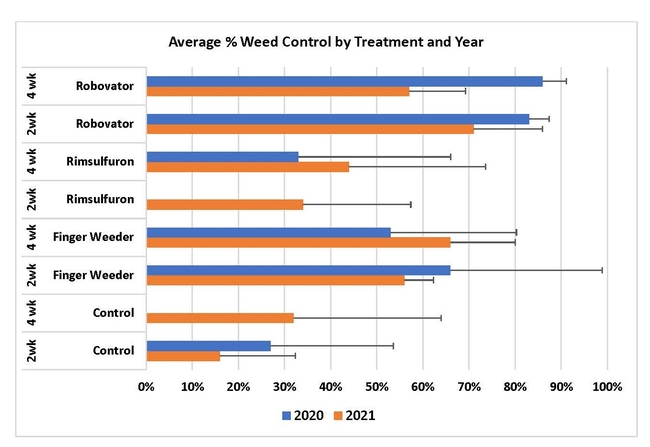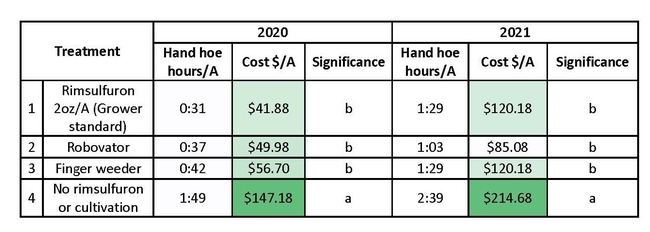Conventional processing tomato weed management in California often includes pre-plant herbicides (trifluralin and/or s-metolachlor), followed by cultivation, and hand hoeing. Rimsulfuron herbicide can also be used in conventional systems and can be applied either pre or post transplanting. Post-transplant applications of rimsulfuron can selectively remove nightshades if applied when the weeds are very young, no more than 2 true leaves, however, long plant-back restrictions may limit its use. Therefore, the use of hand crews is often needed to remove weeds that emerge in the plant row, where standard cultivation equipment is ineffective.
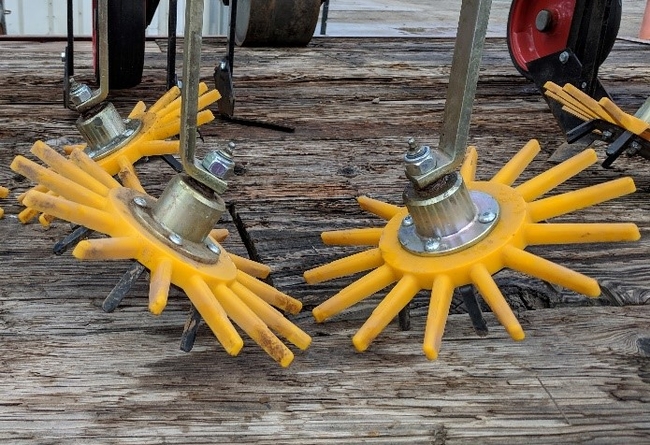
While both robotic cultivators and finger weeders have been used and evaluated in many vegetable crops, there has been little research evaluating these tools in processing tomatoes and how well they may complement or replace a traditional herbicide program. The main objective of this project was to evaluate crop safety, weed control, time, and costs associated with using mechanical cultivators as part of a conventional weed management program in processing tomatoes. This work is supported by the California Tomato Research Institute, with assistance from grower cooperators.
Methods
This project was conducted in 2020 and 2021 in both Colusa and Merced counties.UCCE Vegetable Crops Advisor, Scott Stoddard, led project efforts in Merced County. Only the Colusa site data will be presented here. The Colusa County field site was located just north of Colusa, CA and the same site was used both years. The field was transplanted to double row tomatoes, on 60” beds. Plot size was 5 beds by 250 ft length, except for Control (Treatment 4) which was 5 beds by 100 ft length to minimize impact. Each treatment was replicated three times. The following treatments were evaluated:
- Rimsulfuron at 2oz/A (grower standard)
- Automated cultivator (1 bed/pass)
- Finger weeder mechanical cultivator (5 beds/pass)
- Control: no in-row cultivation, no post-transplant herbicide.
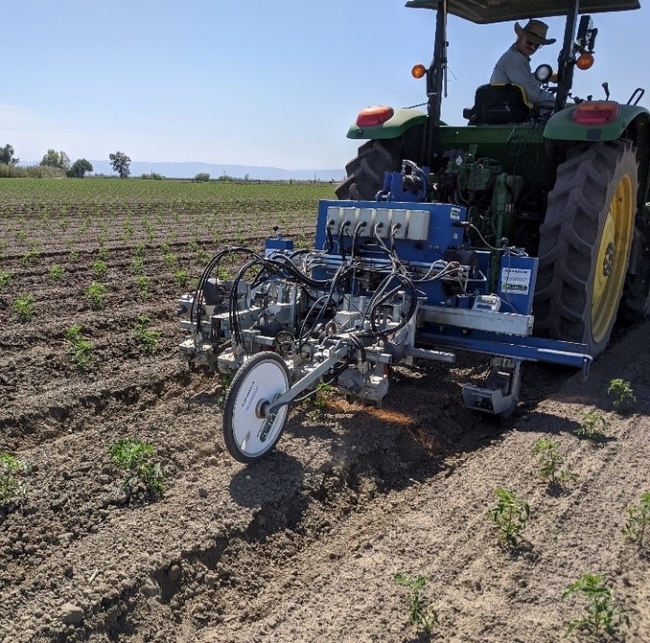
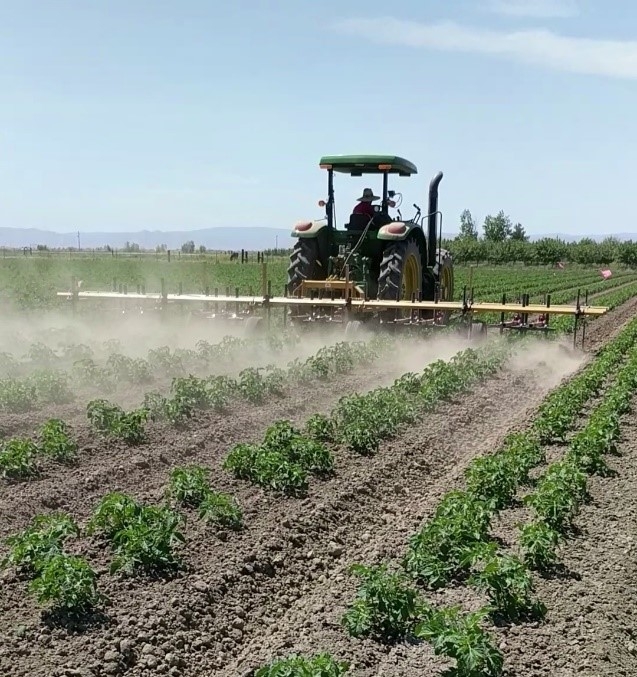
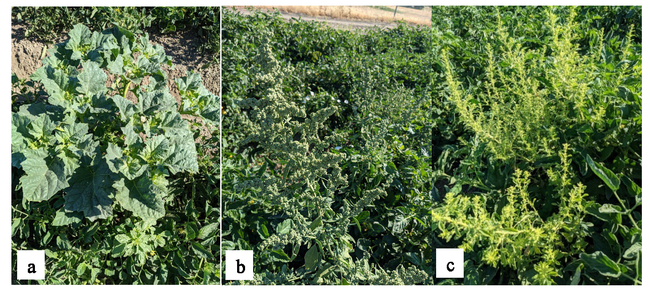
Results
Weed control results are shown in Figure 5. In 2020, the Robovator and finger weeder did an excellent job of weed control on all plots. In 2020, the Robovator worked very well, providing up to 85% control on average two weeks and four weeks after it was run, and we saw very little crop injury (Figure 6). However in 2021, due to heavy winds in early May, the young tomato plants were not upright, and the robotic weeder had difficulty distinguishing where the stem of the plant was compared to the top of the plant. These plots suffered 11-19% crop loss, which also occurred at the Merced site in 2020 (Figure 7). Despite the crop injury, average weed control was 71% after 2 weeks in 2021 and there was no negative impact on yield. The finger weeder provided 66% on average two weeks post-treatment in 2020. It is worth noting that by plot, the finger weeder provided over 90% control post-treatment in two of the plots. The third plot showed poor control due to heavy bindweed pressure, therefore bringing the average down. The finger weeder also provided excellent control at the Merced site in 2020. In 2021, the finger weeder provided an average of 56% control two weeks after treatment and 66% control four weeks after treatment. The grower standard herbicide treatment of rimsulfuron provided 34% and 44% control on average at two and four weeks after application in 2021, but it is worth noting this field did not have heavy nightshade pressure. Despite the numeric differences between treatments shown in Figure 5, there was no significant difference between the cultivator treatments and the grower standard (rimsulfuron) for weed control in either year, due to high variation in weed pressure between plots, which can be seen from the high standard error values.
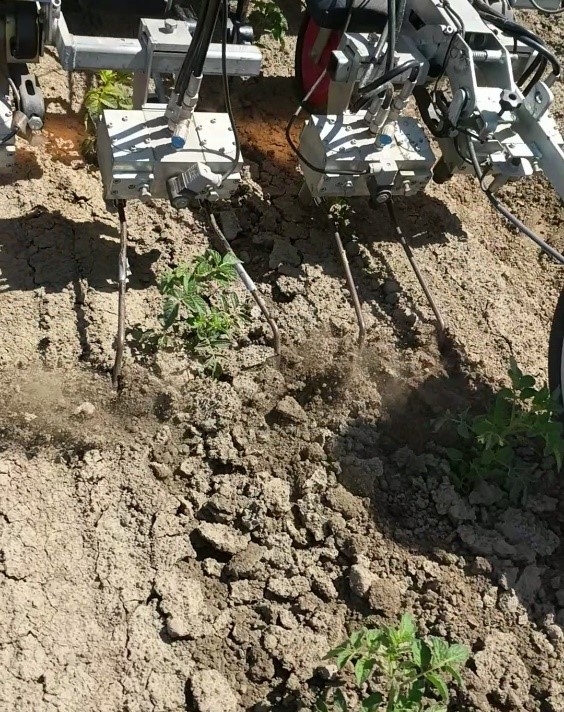
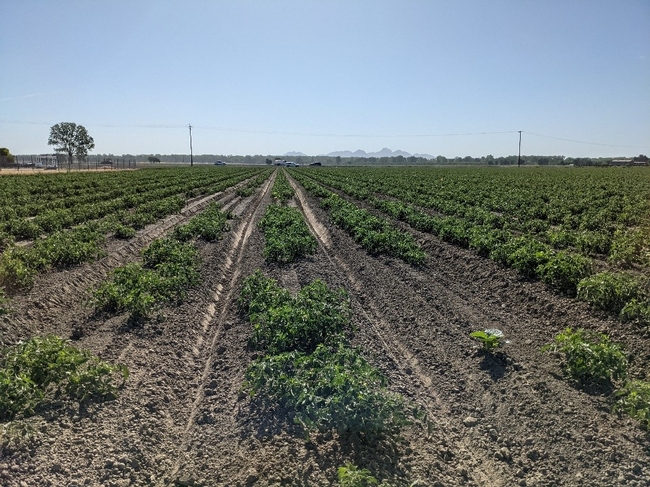
In general, hand weeding provided 60-100% control between 2020 and 2021. Hand weeding times and costs were not significantly different between the grower standard (rimsulfuron), finger weeder or robotic weeder treatments in both years and all treatments significantly decreased time and costs compared to the control plots (Table 1). Weed pressure increased in 2021 leading to higher weed counts and longer hand weeding times and associated costs compared to 2020. There were no significant differences in yield between plots in 2020 or 2021.
Summary
Field variation and weed species influenced weed pressure and control, some plots had >300 weeds and others only had 10. There was poor bindweed control from cultivators and hand-weeding crews, which was expected based on the biology of bindweed. Both in-row cultivators provided decent control in 2020. The finger weeder was able to cover five beds per pass and moved quickly through the field compared to the Robovator. All treatments significantly reduced hand weeding costs and time compared to the control in 2020. Despite the crop injury issues with the automated cultivator in 2021, the Robovator plots resulted in the highest % weed control and fastest hand-weeding times.
The finger weeder is gaining popularity in the Sacramento Valley and provides an option for in-row mechanical cultivation without the expense of an automated weeder. Timing is key when using either type of in-row cultivator. The size of the tomato plant and the size of emerging weeds needs to be just right to avoid crop injury while also removing young weeds. The finger weeder provided excellent weed control in Colusa and Merced in 2020, despite poor bindweed control. The automated weeder provided excellent weed control at the Colusa site, but with high crop injury and technological challenges. When working correctly, automated weeders provide accurate and precise weed control, though issues can arise when conditions are not as favorable. In-row mechanical cultivators, like the finger weeder, are more economical, but automated weeders are becoming more prevalent in California for vegetable production systems.
Many thanks to the California Tomato Research Institute, Steve Fennimore, Scott Stoddard, and our grower cooperators for working with us on this project.
Amber Vinchesi-Vahl is the UC Cooperative Extension Vegetable Crops Advisor for Colusa, Sutter and Yuba counties.
This article was published in the March/April 2022 issue of Progressive Crop Consultant.
